We have tried many really weird fruits that seem to grow all over in the jungle. Some of them were so new, so we choked a few bites down to be polite, and then threw the rest away as soon as we could. One in particular tasted like smushed bananas mixed with a coconut. Rob sort of acquired a taste for them, but not me. It’s not that they were bad, just new to us. We’ve also eaten great samples of papaya, lime, grapefruit, oranges, tangerines, kumquats, pineapples, mangos, and jicama (which is tastes and looks like an edible raw potato). But it’s not just the fruits that are amazing here. Food also is very different, and although our mouths were dripping with the thought of eating some hot corn tortillas, we found some foods that we didn’t expect. Pumpkin seeds, called pepitas, are very popular. The first 2 days in Tinum, we ate them prepared 4 different ways. First, we ate pepitas crushed and dried, mixed with salt, and put on a cold tortilla. That was edible, almost. Then we ate pepita crushed and mixed with corn meal, and cooked inside a banana leaf on a fire. This is called Brazo de Reina. Very edible. Pepita seeds can also be dried whole and seasoned, and we were given a bag of these delightful snacks at a house we visited, which we munched on before bedtime. And lastly, a woman across the street mixed boiling honey and pepita seeds to make a type of candy, which she then poured onto a hard green leaf the size of a dinner plate, and handed to us as we came to visit her. Don’t eat the leaf, she warned me. The best part of the day was watching her laugh at me as I tried to eat nicely, and ended up with a mouth full of chewy goodness, along with sticky fingers, legs, and elbows. **** Rob and I were walking back to our house in late afternoon one day, after going to a little store for a few eggs. In one yard we could see to the top of a woman’s head appearing over the waist high rock wall which surrounds nearly every house in town. Since we hadn’t yet chatted with this lady, we walked over the wall and looked over. She was just sitting on her banquillo (a short chair with no back) under a shade tree, doing nothing. “What are you doing?” we asked her.
“Gustando”, she replied. Enjoying. ****
The whole Yucatan Peninsula is basically just one huge sheet of limestone rock. In fact the whole place is extraordinary flat, with very few bumps that don’t even come close to being hills. Neither are there any lakes, rivers, or bodies of water of any kind on the peninsula. The only way for ancient people to have any sort of a water supply was to live near a cenote. Cenotes are actually sinkholes, which are formed when the limestone on the surface of the earth collapses and fills with water. There are hundreds, perhaps thousands, of cenotes on the Peninsula. There are at least 5 of them within a couple miles of Tinum. The water in these cenotes is perfectly clear, blue, and refreshing… …when you can reach the water. The water table sits about 75 ft below the surface, so usually getting in the water would require a high dive, ... with no way back out. But there are some that you can get into, and one of these is near Tinum. We decided to visit it one day, and packed our bags with lots of rope, flashlights, candles, and our bathing suits. We pedaled our bikes about 3 miles down the road, then turned off on a narrow, rocky path used by the Mayans to get to there fields. Turning off from the path into the jungle, we suddenly stopped before we could fall into a big hole in the ground, a cenote. It was almost 30 ft across, impossibly deep, and we threw a rock down into the water, to watch the splash far below us and to see the fish swimming around. Birds flew out of their nests at the sound. Then we turned back to the path and followed it a little farther. Turning aside again, into a twist of the jungle that hardly ever appeared to have been walked on, we heaved our bikes through the vines, and swatted at a few mosquitoes wakened by our passing. Convinced then that our bikes were sufficiently hidden and having seen no one the whole trip anyway, we left them, grabbed the rope and the lights, and walked to a little tiny hole in the ground, maybe 5 ft across, that we could just step into, and follow down crouching for another 10 ft, until we came to a very black hole. Here’s where we would need the rope. We climbed back out, tied the rope to a tree, and tried again. We shined our lights into the black hole, which was about 12 ft. deep, and found an old ladder made of branches and a sturdy pole left there for an aide. Using the rope and the ladder, we made our way down, breaking the ladder in the process, because it had been tied together with vines that had rotted. Once on the bottom, we clipped our flashlights to our belts, lit the candles, and started stepping down into the cave. Soon the shafts of daylight disappeared entirely, and it was eerily dark and quiet. Our trip took us down into the heart of the earth, and our candlelight flickered as we followed an old string and piles of rocks previously placed once upon a time, to keep one from straying off the path. In some parts, the roof would dip so low that we were forced to crawl for a ways. Other places, we could barely see the ceiling, and stalactites and stalagmites were everywhere, and the walls all shades of whites and blues and reds. Sometimes our way would take us under sleeping bats, and when we shined a light on them, they appeared to have no eyes. If the light stayed too long, they would wake up and take flight in a silent rush of wings, and only being a foot or so from them, we couldn’t help flinching and ducking, but they never touched us. In one section of the cave, we came upon hundreds of tiny white stalagmites hanging from the ceiling, all smaller than your little finger, with little drops of water hanging off of them. And then suddenly the floor under our feet started to get a little damp and squelchy, and we decided to take off our shoes, put on our swimsuits, and continued on. The floor kept getting wetter, and the walls narrowed until our shoulders could almost touch both sides, and the caved weaved back and forth, still narrow, until suddenly, ... was that daylight ahead? And then all of a sudden we came upon the cenote that we had seen from above in the jungle, only instead of being on top of it, we had come out right at the waters edge. We could look up and see the trees waving in the wind, and a huge root of a tree, growing all the way down into the water, with vines chasing up it, and butterflies flying around. And the water! I dipped my hand into it, and I could see far down into the water, but the bottom was too deep to think about. It was refreshingly cool, and we couldn’t wait to jump into it and clean off our dirty hands and knees from crawling around in the bat guano. I put a pair of goggles on, to see into the water, and leaped out into the cenote from that narrow opening. Out in the middle of the cenote, at midday, came a small but bright ray of sun from the opening high above. It was brilliantly sunny this day, and the sun shone down in the rippling waters as I swam towards the light. And right there in the middle, was a huge mostly submerged fallen tree, and we could stand on its limbs to rest waist high there in the cool water and feel the sun on our arms and faces. And when we stood still enough, the fish would nibble at our toes. ****
Getting inspired one morning, we decided to ride our bikes to Valladolid. It’s the second largest city in the Yucatan, although it’s not really that big, and it’s only 21 kilometers away (13 miles). We fought against the prevailing east wind all the way there, and then went swimming in yet another cenote to cool off, this one in the heart of the city. Tourists actually get charged money to enter this one, whose roof has partially fallen in and therefore has become easy to enter. Rock steps have been built down to the water level, but we jump from a ledge 6 ft. above the water, and I land in the water like a frog. We are quickly cooled off, and after sunning ourselves on the hot rocks, we jump in the water again, and then decide it’s time to ride home. This time we have the strong east wind at our backs, and we literally fly. Halfway home, we pass through the village of Uayma (pronounced why-mah). We ride slowly, though this tiny place, seeing all the sights and smells and smoke coming from the yards. Robs suddenly says STOP, because he wants me to see something, and he nonchalantly just walks into a yard, where a old man is sitting on a banquillo, with a bucket of ear corn in front of him. Of course, I follow, knowing that Rob has just gotten us into another adventure, and we start talking to the man and helping him. Turns out that he is desgranando (shelling corn), and the 1/2 bushel of corn that he has in front of him will last for about 2 days, to make tortillas and to feed their chickens and turkeys and pigs. So shelling ear corn is a job that always needs to be done, and we sit down and learn how to do it. There are techniques to do this efficiently (how about using a combine, is what I’m thinking), and I am patiently taught by the old man, who loves the chance to sit and chat while we work. Rob uses an old cob to save his fingers, but I jump in with both hands and start ripping off kernels. Well, it works for a while, but my fingers are pretty wimpy and they are soon red and sore. We work until there is a good layer of kernels in the pan instead of cobs, and the chickens that wander under my legs steal a kernel or two. We chat until the sun almost sets, and then, with our fingers hurting, the man thanks us for the help, and we ride off again with the wind at our backs. ****
What is a vacation without a trip to the beach. Cancun is nice, but it can be rather expensive and is also full of gringos (Americans). Isla Mujeres is an island just off the coast of Cancun, and we set our sights to go there. The slow boat to get there costs 25 pesos, and it is a 45 minute introduction to the beautiful clear, blue waters and the slow pace of life. Once on the island, motor scooters and bicycles rule the roads, and the ocean breeze cooled us down. After finding a good hotel, we had to go for a swim at sunset, and the lazy waves on the west shore felt like heaven. The next morning, the wind died down and it became a perfect day to snorkel. We rented a little boat, and the owner took the 2 of us to the lighthouse, where the fish love to hang out on the reefs. We spent 2 hours with our faces in the water, hearing the sound of our bubbles and watching the brightly colored fish swim underneath us. There were too many to see them all, rainbow fish, purple ones, blue ones, yellow ones, striped ones, green ones, big orange ones, tiny white ones, and silvery fish with big teeth hanging in the shadows. We glued our faces to the water as a school yellow and white fish swam around us, coming up to look in our masks, yet evading our paddling hands. We swam until the backs of our legs were sunburnt, and our arms were tired. Then we climbed back into the boat, and went to the beach for a fish lunch. Our guide cooked the huge filet of fish, and then handed us heaping plates of fish, rice, corn tortillas, onions, limes, and hot sauce. I loved making little tacos with fish and rice and onions, and then pouring some lime juice on top. We ate until we were stuffed, and there still was fish left. Then we climbed to the front of the boat, laying in the sun and relaxing for the slow boat ride home. It was still early afternoon, and with a little energy left, but not enough to rent bicycles, we rented a little motor scooter and took a tour of the island. It is about 1/2 mile at the widest, and some places narrower. It is about 6 miles long, and our scootor made it around 4 times before we almost ran out of gas.

































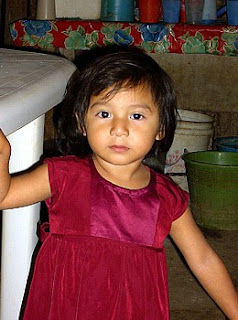





































































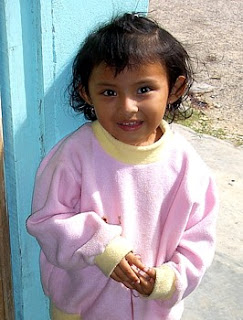














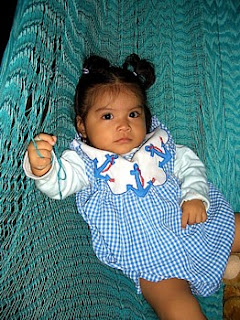








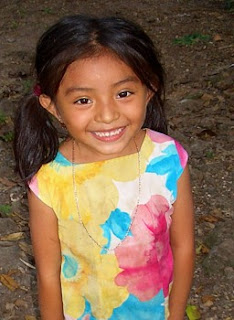



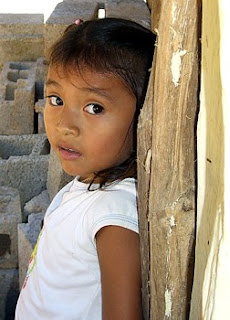




























No comments:
Post a Comment